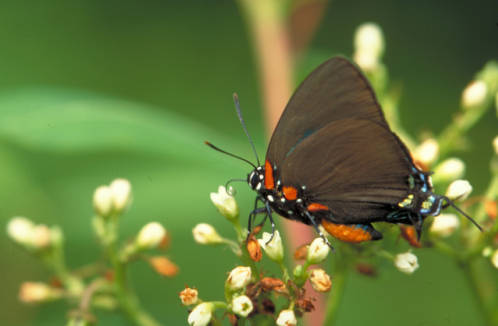 Recently published research from the Florida Museum of Natural History’s McGuire Center for Lepidoptera and Biodiversity provides experimental confirmation that the thing that looks like a second head on the back wings of some hairstreak butterflies does indeed protect the butterflies from predators, as has long been guessed.
Recently published research from the Florida Museum of Natural History’s McGuire Center for Lepidoptera and Biodiversity provides experimental confirmation that the thing that looks like a second head on the back wings of some hairstreak butterflies does indeed protect the butterflies from predators, as has long been guessed.
The surprise was what predator it provided protection from. The conventional wisdom has said that adaptive coloration protects butterflies from birds, the researcher, Andrei Sourakov, says in a University of Florida press release. But this research showed that the fake heads were very successful at deterring jumping spiders — which easily took down other butterflies without fake heads on their hind-wings.
This may not be much help in day-to-day wildlife management, but it is a cool piece of research, and with several hairstreaks endangered or threatened at the state level, you never know when you’ll be writing up a hairstreak management plan.
The University of Florida press release.
The open access Journal of Natural History paper.
Photo: Great purple hairstreak by Dr. Thomas G. Barnes/University of Kentucky, used courtesy of the US Fish and Wildlife Service
